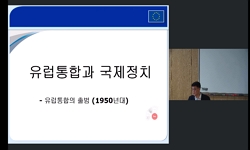Objective To study the effect of time on shift on the opioid prescribing practices of emergency physicians among patients without chronic opioid use.Methods We analyzed pain-related visits for five painful conditions from 2010 to 2017 at a single acad...
http://chineseinput.net/에서 pinyin(병음)방식으로 중국어를 변환할 수 있습니다.
변환된 중국어를 복사하여 사용하시면 됩니다.
- 中文 을 입력하시려면 zhongwen을 입력하시고 space를누르시면됩니다.
- 北京 을 입력하시려면 beijing을 입력하시고 space를 누르시면 됩니다.

Time on shift in the emergency department and decision to prescribe opioids to patients without chronic opioid use
한글로보기https://www.riss.kr/link?id=A108517354
-
저자
Agarwal Isha (Department of Emergency Medicine, Maine Medical Center, Portland, ME, USA) ; Joseph Joshua W. (Department of Emergency Medicine, Beth Israel Deaconess Medical Center, Boston, MA, USA) ; Sanchez Leon D. (Department of Emergency Medicine, Brigham and Women’s Faulkner Hospital, Boston, MA, USA)
- 발행기관
- 학술지명
- 권호사항
-
발행연도
2022
-
작성언어
English
- 주제어
-
등재정보
KCI등재
-
자료형태
학술저널
-
수록면
108-113(6쪽)
- DOI식별코드
- 제공처
-
0
상세조회 -
0
다운로드
부가정보
다국어 초록 (Multilingual Abstract)
Objective To study the effect of time on shift on the opioid prescribing practices of emergency physicians among patients without chronic opioid use.Methods We analyzed pain-related visits for five painful conditions from 2010 to 2017 at a single academic hospital in Boston. Visits were categorized according to national guidelines as conditions for which opioids are “sometimes indicated” (fracture and renal colic) or “usually not indicated” (headache, low back pain, and fibromyalgia). Using conditional logistic regression with fixed effects for clinicians, we estimated the probability of opioid prescribing for pain-related visits as a function of shift hour at discharge, time of day, and patient-level confounders (age, sex, and pain score).Results Among 16,115 visits for which opioids were sometimes indicated, opioid prescribing increased over the course of a shift (28% in the first hour compared with 40% in the last hour; adjusted odds ratio, 1.06; 95% confidence interval, 1.02–1.10; adjusted P-trend <0.01). However, among visits for which opioids are usually not indicated, relative to the first hour, opioid prescriptions progressively fell (40% in the first hour compared with 23% in the last hour; adjusted odds ratio, 0.93; 95% confidence interval, 0.91–0.96; adjusted P-trend <0.01).Conclusion As shift hour progressed, emergency physicians became more likely to prescribe opioids for conditions that are sometimes indicated, and less likely to prescribe opioids for nonindicated conditions. Our study suggests that clinical decision making in the emergency department can be substantially influenced by external factors such as clinician shift hour.
1 Heirich MS, "Use of immersive learning and simulation techniques to teach and research opioid prescribing practices" 20 : 456-463, 2019
2 Campbell CI, "Use of a prescription opioid registry to examine opioid misuse and overdose in an integrated health system" 110 : 31-37, 2018
3 Linder JA, "Time of day and the decision to prescribe antibiotics" 174 : 2029-2031, 2014
4 Satterwhite S, "Sources and impact of time pressure on opioid management in the safety-net" 32 : 375-382, 2019
5 Muraven M, "Self-regulation and depletion of limited resources : does self-control resemble a muscle?" 126 : 247-259, 2000
6 Keister LA, "Provider bias in prescribing opioid analgesics : a study of electronic medical records at a hospital emergency department" 21 : 1518-, 2021
7 Beaudoin FL, "Prescription opioid misuse among ED patients discharged with opioids" 32 : 580-585, 2014
8 Barnett ML, "Opioid-prescribing patterns of emergency physicians and risk of long-term use" 376 : 663-673, 2017
9 Danziger S, "Extraneous factors in judicial decisions" 108 : 6889-6892, 2011
10 Glober NK, "Examination of physician characteristics in opioid prescribing in the emergency department" 50 : 207-210, 2021
1 Heirich MS, "Use of immersive learning and simulation techniques to teach and research opioid prescribing practices" 20 : 456-463, 2019
2 Campbell CI, "Use of a prescription opioid registry to examine opioid misuse and overdose in an integrated health system" 110 : 31-37, 2018
3 Linder JA, "Time of day and the decision to prescribe antibiotics" 174 : 2029-2031, 2014
4 Satterwhite S, "Sources and impact of time pressure on opioid management in the safety-net" 32 : 375-382, 2019
5 Muraven M, "Self-regulation and depletion of limited resources : does self-control resemble a muscle?" 126 : 247-259, 2000
6 Keister LA, "Provider bias in prescribing opioid analgesics : a study of electronic medical records at a hospital emergency department" 21 : 1518-, 2021
7 Beaudoin FL, "Prescription opioid misuse among ED patients discharged with opioids" 32 : 580-585, 2014
8 Barnett ML, "Opioid-prescribing patterns of emergency physicians and risk of long-term use" 376 : 663-673, 2017
9 Danziger S, "Extraneous factors in judicial decisions" 108 : 6889-6892, 2011
10 Glober NK, "Examination of physician characteristics in opioid prescribing in the emergency department" 50 : 207-210, 2021
11 Eder SC, "Documentation of ED patient pain by nurses and physicians" 21 : 253-257, 2003
12 Dowell D, "CDC guideline for prescribing opioids for chronic pain: United States, 2016" 65 : 1-49, 2016
13 Neprash HT, "Association of primary care clinic appointment time with opioid prescribing" 2 : e1910373-, 2019
14 Khidir H, "A call for better opioid prescribing training and education" 17 : 686-689, 2016
동일학술지(권/호) 다른 논문
-
- 대한응급의학회
- Jihoon Yoon
- 2022
- KCI등재
-
Current updates in acute traumatic aortic injury: radiologic diagnosis and management
- 대한응급의학회
- Shivani Gupta
- 2022
- KCI등재
-
- 대한응급의학회
- 박희수
- 2022
- KCI등재
-
- 대한응급의학회
- Jang Yonghoon
- 2022
- KCI등재




 KCI
KCI







